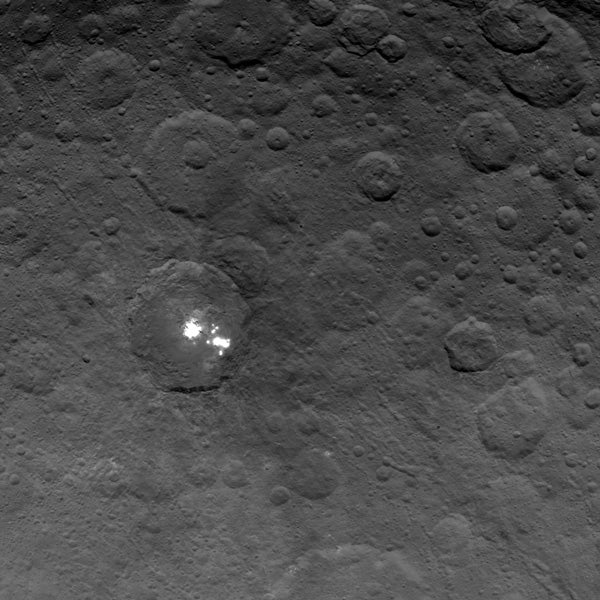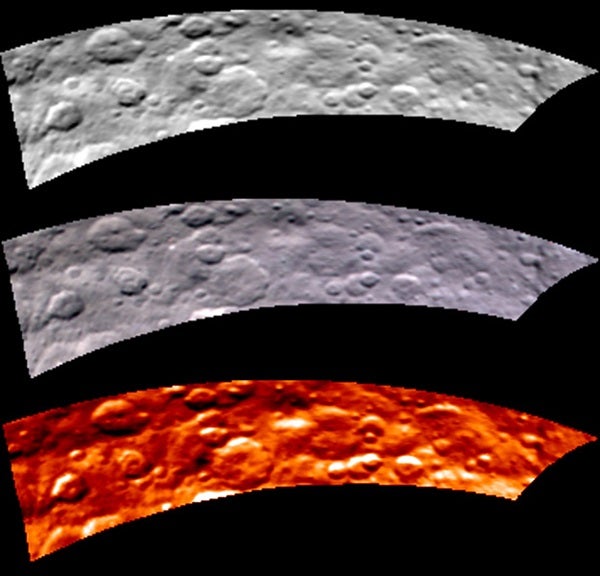The region with the brightest spots is in a crater about 55 miles (90km) across. The spots consist of many individual bright points of differing sizes with a central cluster. So far, scientists have found no obvious explanation for their observed locations or brightness levels.
“The bright spots in this configuration make Ceres unique from anything we’ve seen before in the solar system,” said Chris Russell from the University of California in Los Angeles. “The science team is working to understand their source. Reflection from ice is the leading candidate in my mind, but the team continues to consider alternate possibilities, such as salt. With closer views from the new orbit and multiple view angles, we soon will be better able to determine the nature of this enigmatic phenomenon.”
Numerous other features on Ceres intrigue scientists as they contrast this world with others, including protoplanet Vesta, which Dawn visited for 14 months in 2011 and 2012. Craters abound on both bodies, but Ceres appears to have had more activity on its surface, with evidence of flows, landslides, and collapsed structures.
Having arrived in its current orbit June 3, Dawn will observe the dwarf planet from 2,700 miles (4,400km) above its surface until June 28. In orbits of about three days each, the spacecraft will conduct intensive observations of Ceres. It will then move toward its next orbit of altitude 900 miles (1,450km), arriving in early August.
On March 6, 2015, Dawn made history as the first mission to visit a dwarf planet and the first to orbit two distinct extraterrestrial targets. At its previous target, Vesta, Dawn took tens of thousands of images and made many observations about the body’s composition and other properties.











